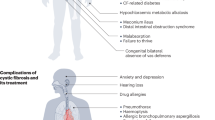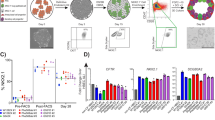Abstract
The cystic fibrosis CFTR chloride channel is involved in pathogen entry into epithelial cells, and provides the glutathione and hypochlorous acid necessary for bactericidal and viricidal actions. CFTR mutations block these effects, diminishing pathogen defence and allowing pathogen accumulation in the extracellular space, where antibody encounter is likely. The pathogen antigens observed in cystic fibrosis (including P. Aeruginosa, S.Aureus and S.Maltophilia proteins) are homologous to the autoantigens reported in cystic fibrosis and all are homologous to the CFTR protein itself. Antibodies to pathogens and autoantigens may also target the CFTR protein, acting as antagonists, further compromising its function. The tripartite relationship between pathogen antigens, autoantigens and the CFTR protein creates a feed forward cycle, diminishing the function of the CFTR protein and increasing the probability of pathogen accumulation and further antibody encounters at every turn. Kegg pathway analysis of the CFTR/autoantigen interactome indicates that the CFTR protein is also involved in pathogen entry pathways, diabetes and pancreatic and gastric acid secretion pathways, in pathways related to cardiac myopathy, and in the gonadotrophin signalling network, all which are relevant to cystic fibrosis. Interruption of this cycle by antigen and antibody adsorption, and possibly by immunosuppressant therapy may perhaps be of clinical benefit in cystic fibrosis.
Similar content being viewed by others
Article PDF
Author information
Authors and Affiliations
Rights and permissions
About this article
Cite this article
Carter, C. Bioinformatics analysis of homologies between pathogen antigens, autoantigens and the CFTR cystic fibrosis protein: A role for immunoadsorption therapy?. Nat Prec (2010). https://doi.org/10.1038/npre.2010.5352.1
Received:
Accepted:
Published:
DOI: https://doi.org/10.1038/npre.2010.5352.1



